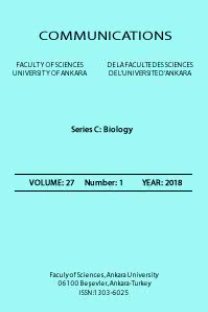THE CEREBRAL NEUROSECRETORY SYSTEM AND THE DIVER- SITY OF THE NEUROSECRETORY CELL TYPES IN PIMPLA TURIONELLAE L. (HYMENOPTERA: ICHNEUMONmAE)
Öz The anatomy and the histology of the brain and the retrocerebral endocrine glands of the adult P. turionellae have been studied by staining technigues such as chrome haematoxyİin ph- loxine, paraldehyde fuchsin and performic acid victoria blue. Three types of neurosecretory cells were observed in the brain. They were named as Type-I, Type-II and Type-III. The neurosecre tory granules, which were stained dark purple with paraldeyde fuchsin, were present only in the Type-I cells. The same neurosecretory granules were also present in the nervi corporis cardiaci, the corpora cardiaca, and the corpora allata. It was thought that the neurohaemal organ was the corpora cardiaca and some of the neurosecretory material directly passed into haemolenph because of the fact that the amount of the neurosecretory material in the corpora cardiaca was never as abundant as in the nervi corporis cardiaci. The illustrations correlated with the histology of the brain and the retrocerebral endocrine glands of the adult P. turionellae are presented in the paper. The different types of celi in P. turionellae are compared with the neurosecretory cells described in other species.
Anahtar Kelimeler:
CEREBRAL NEUROSECRETORY, DIVER- SITY, PIMPLA TURIONELLAE L.
___
Ankara Üniversitesi – Communications Faculty of Sciences University of Ankara Series C Biology Dergisi- ISSN: 1303-6025
- Yayın Aralığı: Yılda 2 Sayı
- Başlangıç: 1943
- Yayıncı: Ankara Üniversitesi
Sayıdaki Diğer Makaleler
